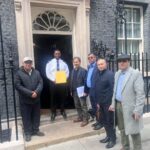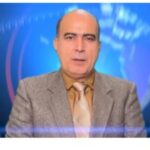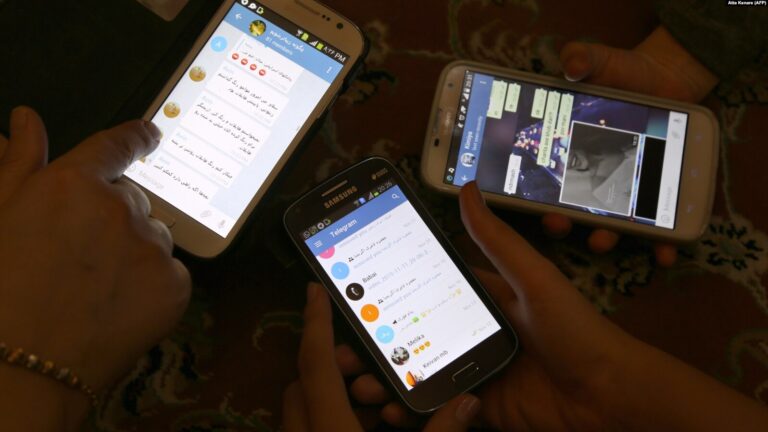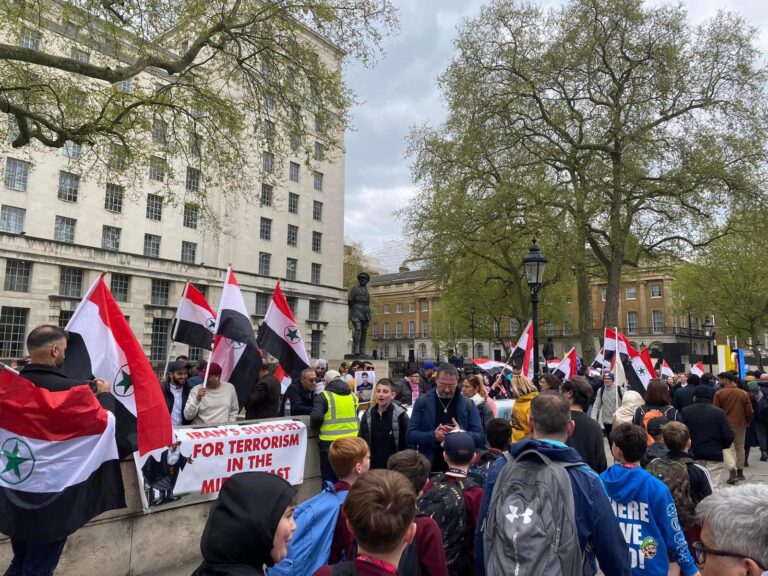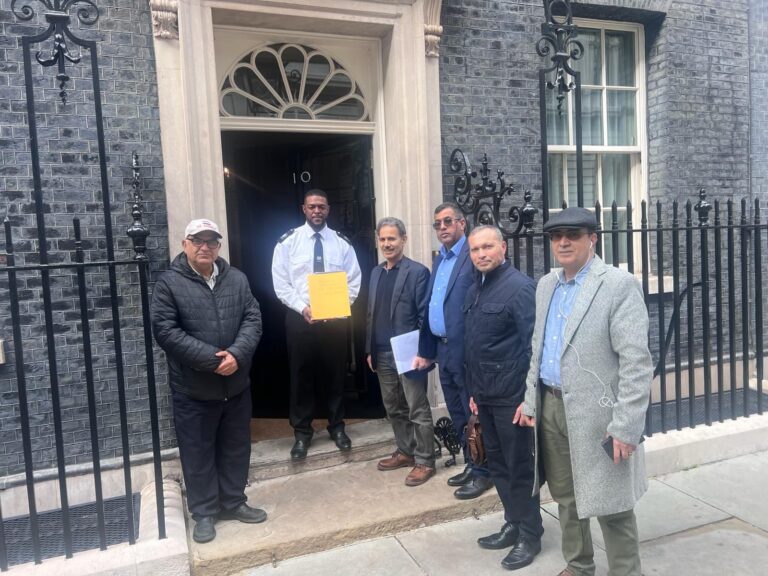Genocide is a chilling term and a ruthless practice. Just hearing this word conjures images of the severity of situations humanity has witnessed throughout history. People tend to believe that in the current era, and under various human rights laws and regulations, no one is subjected to such brutal actions. However, upon closer examination, we can make a different assertion. In this article, I argue that the Iranian regime is ruthlessly pursuing genocide against the Arab citizens in Iran. Additionally, I will explore genocide from various perspectives, categorizing it into five distinct categories: physical genocide, linguistic genocide, economic
genocide, environmental genocide, and cultural genocide. In this article, I will focus exclusively on the physical genocide of Arab citizens in Iran perpetrated by the Iranian regime.
Genocide, although a relatively recent term, bears historical precedents, and despite its covert nature, it is still practiced by several dictatorships worldwide in the contemporary era. First and foremost, it is imperative to establish a comprehensive definition of the term “genocide” in order to facilitate a shared understanding of the subject matter. According to Andreopoulos (2003), genocide can be described as “the deliberate and systematic eradication of a group of people due to their ethnicity, nationality, religion, or race.” Furthermore, Lemkin (1944) noted that a key component of genocide is “criminal intent to destroy or to cripple permanently a human group. The acts are directed against groups as such, and individuals are selected for destruction only because they belong to these groups”.
Considering the definitions provided by both Andreopoulos and Lemkin, one can argue that the Iranian regime, by employing unsubstantiated charges like treason and terrorism, fabricating evidence, and carrying out mass executions and capital punishment against Arab citizens, is engaged in a deliberate campaign aimed at annihilating or permanently incapacitating the Arab citizens in Iran. In other words, the Iranian regime is actively
perpetrating physical genocide against Arab citizens.
Numerous events substantiate these claims. However, due to constraints related to article length, I will provide only a succinct overview of actions taken against Arab citizens in Iran, which suggest deliberate acts of physical genocide against this community. I would like to initiate my discussion with the occurrences of July 2012, when Hashem Shabani, a 32-year-old Ahwazi activist, and his associate, Hadi Rashedi, aged 38, received death sentences. They faced charges of ‘Moharebeh’ (waging war against God) and ‘Ifsad fel Arz’ (corruption on Earth),
charges typically applied by the Iran regime to individuals perceived as dissidents. According to Human Rights reports, the singular “offense” for which both individuals were accused pertained to their roles in co-founding Al-Hiwar, a cultural institute established with the objective of advancing Arabic education among the marginalized Ahwazi youth. Over the course of the two years leading up to their execution by hanging, both individuals endured extended periods of torture, which ultimately coerced them into signing fabricated confessions that inaccurately linked them with a terrorist organization.
Furthermore, in 2019, another distressing incident transpired, widely acknowledged as the Mahshahr Massacre. This tragic event was characterized by the mass killing of a group of peaceful demonstrators who had sought refuge in a nearby marsh. Regrettably, they were encircled by the Revolutionary Guards, who utilized machine guns, leading to a devastating loss of lives. The Guards then evacuated the deceased using a vehicle before departing the area. Some news agencies, like Reuters, estimated that the actual number of fatalities could be as
high as 1500, rendering it an even more devastating and tragic event. This event serves as one of the most lamentable and bloodiest instances perpetrated by the authoritarian regime of Iran.
As a side note, it is important to mention that on July 4, 2023, Abbas Daris, a courageous eyewitness of the massacre, was unjustly sentenced to capital punishment. Despite efforts to contest this verdict, the Mahshahr Revolutionary Court pronounced a death sentence for Abbas Daris, a decision subsequently upheld by the Supreme Court to eliminate the only alive witness of the massacre.
Regrettably, these events did not represent the final chapter. On July 15, 2021, another poignant episode of violence unfolded, directed at the Arab citizens in Iran. The withholding of water resources by the regime resulted in acute water scarcity, particularly exacerbated in the scorching Khuzestan province, where temperatures reached as high as 52 degrees Celsius during the summer. This, combined with electricity shortages, served as a catalyst for a succession of protests among the Arab citizens. These protests were swiftly dubbed “The Uprising of the Thirsty”. These demonstrations faced brutal suppression by the police forces, with live bullets callously fired upon peaceful protesters. As the protest suppression unfolded, HRANA verified that 361 individuals detained in connection with these demonstrations. Furthermore, numerous human rights organizations painstakingly validated the identities of no fewer than 10 civilian casualties, utilizing a range of methods, including authenticated videos and reports. It is crucial to note that the actual number of detainees and casualties is suspected to be significantly higher, given the Iranian regime’s consistent efforts to deny or downplay
these figures.
It is unprecedented in any part of the world to witness a regime resorting to lethal force against peaceful protesters whose sole demand is access to water. One of the most poignant moments from this protest was the voice of an elderly Arabic woman who beseeched, “Sir, Sir., the protest is ENTIRELY PEACEFUL. Why do you unleash gunfire upon us? We are entirely peaceful. Why do you shoot at us? They have not taken your land, have they? They have not taken your water, have they? Listen, we seek a peaceful protest. We demand our water, our land. Those with honor would never despoil our land. Shame on you. Land, water, honor. We demand our rights. We are peaceful. Sir, Sir, this is our land, our country.” In the background, sounds of beating and screaming can be heard, and the fate of the woman remains unknown.
These events merely scratch the surface, representing only a fraction of the numerous occurrences targeting the Arab population of Al-Ahwaz. Returning to the definition of genocide, which asserts that genocide entails the “deliberate and systematic eradication of a group of people due to their ethnicity, nationality, religion, or race” it becomes evident that these incidents may be indicative of such intent.
We implore the international community to intervene and prevent the ongoing actions of the regime, aimed at the extermination of Arab citizens in Iran solely due to their Arab ethnicity. In conclusion, I would like to share a message found etched on a prison cell wall in Iran’s Sepidar Prison in Ahwaz, left by a despairing inmate whose fate remains unknown: “My dear son, when you grow up, you will come here like your father. This is the fate of all
Ahwazis”.
Mayasa
05.09.2023
References
1. Andreopoulos, George J.. “genocide”. Encyclopedia Britannica, 9 Aug. 2023, https://www.britannica.com/topic/genocide. Accessed 5 September 2023.
2. Herz, J. H. (1945). Axis Rule in Occupied Europe; Laws of Occupation, Analysis of Government, Proposals for Redress. By Raphael Lemkin.(Washington: Carnegie Endowment for International Peace. 1944. Pp. xxxvii, 674.). American Political Science Review, 39(2), 366-367.



